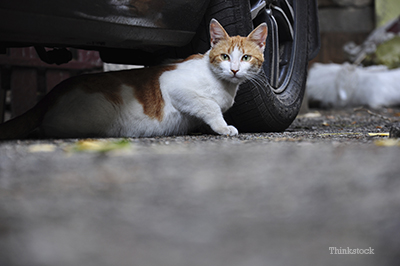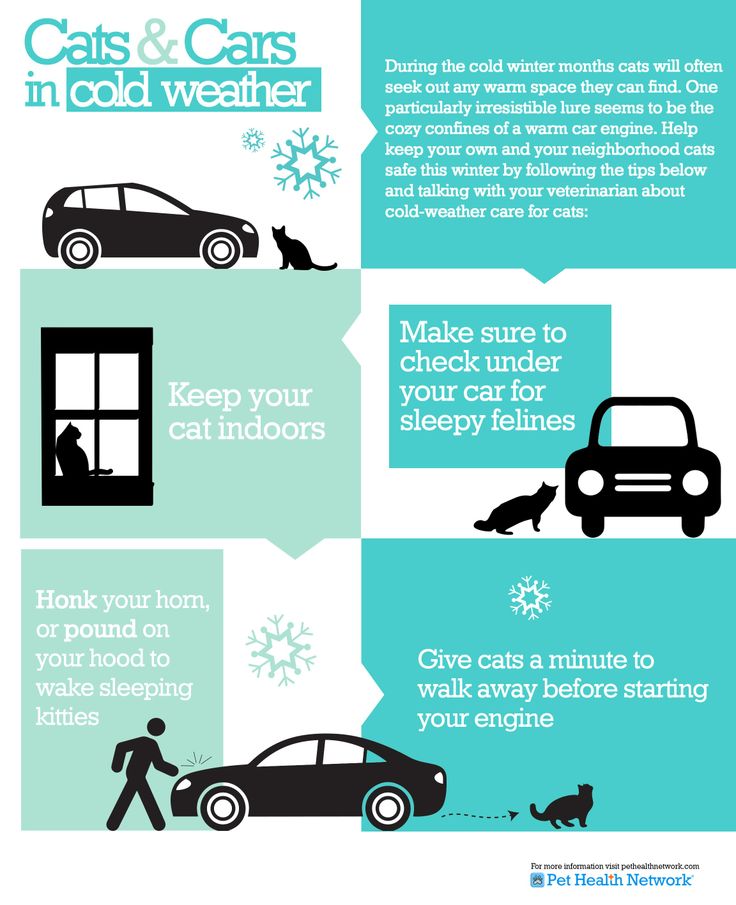
Most people have heard of rodents getting caught in car engines, but did you know that cats occasionally get stuck under hoods too? This happens because stray cats hide under cars in order to stay warm on cold nights.
[Editor’s Note: While you never know where a stray cat may be hiding, you can keep your own cat safe from car dangers by keeping him inside. Click here for more reasons why your cat should be an indoor cat.]
Sometimes cats will climb inside the engine to seek shelter. Unfortunately, this is not a safe place for cats. When unsuspecting car owners turn on their ignition, the moving belts can injure, maim or kill the cat. That brings me to the story of Fanny Mae.
Sleeping inside of a parked car
Fanny Mae had been sleeping inside of a parked car when the car’s owner started the engine early one morning to head into work. After turning on the ignition, she heard some loud noises and clanks under her hood and thankfully turned off the car. She lifted the hood to figure out what was going on and noticed a bloodied paw. She immediately called the Department of Animal Services for help. An officer arrived and after some effort, was able to get Fanny Mae out. Unfortunately, Fanny Mae had several lacerations on her legs and abdomen and wasn’t using her right front leg at all. The officer raced Fanny Mae to the shelter’s veterinary hospital.
That's when I met Fanny Mae. I’ll never forget the fact that despite her severe injuries and obvious pain, she continued to purr and rub her face against my hand. After Fanny Mae was medically stable, we sedated her. I closed all of her wounds and we took full body radiographs (x-rays). Her radiographs showed no fractures or internal injuries, but unfortunately confirmed my suspicion of a brachial plexus injury. Brachial plexus injuries occur when the nerves in the armpit region (called brachial plexus nerves) are stretched or damaged. Unfortunately, brachial plexus injuries do not heal or recover and since the affected limb becomes limp and useless, it has to be amputated to avoid future complications. For the next two weeks, Fanny Mae hung out in our medical center recovering from her wounds. She continued to win the affection of everyone she met. Despite wound cleanings and medications, she remained sweet and grateful.
Amputation by an orthopedic surgeon
Three weeks after her initial trauma, Fanny Mea had her paralyzed leg amputated by an orthopedic surgeon and was returned to the shelter to recover. Again, she was sweet and gentle and never complained or fussed about her care. Last week I spayed Fanny Mae and she went up for adoption. Our adorable, loveable tri-pod was almost immediately adopted. I was thrilled to see her find a forever home.  Unfortunately, not all cats that hide or sleep in car engines are as lucky as Fanny Mae. Sadly many die because of more extensive injuries. To help prevent cats and other animals in your neighborhood from getting under your hood, consider the following tips:
Unfortunately, not all cats that hide or sleep in car engines are as lucky as Fanny Mae. Sadly many die because of more extensive injuries. To help prevent cats and other animals in your neighborhood from getting under your hood, consider the following tips:
- Whenever possible, park your car in your garage.
- Honk your horn or tap on the hood before starting your car to scare away any cats.
- Slam your car door and make noise to give the cat a chance to get away.
- The goal is to make noise so any sleeping animals have a chance to scurry off.
So the next time you leave for work in the morning, think of Fanny Mae and tap your hood or honk your horn — it just might save a life.
If you have any questions or concerns, you should always visit or call your veterinarian -- they are your best resource to ensure the health and well-being of your pets.
